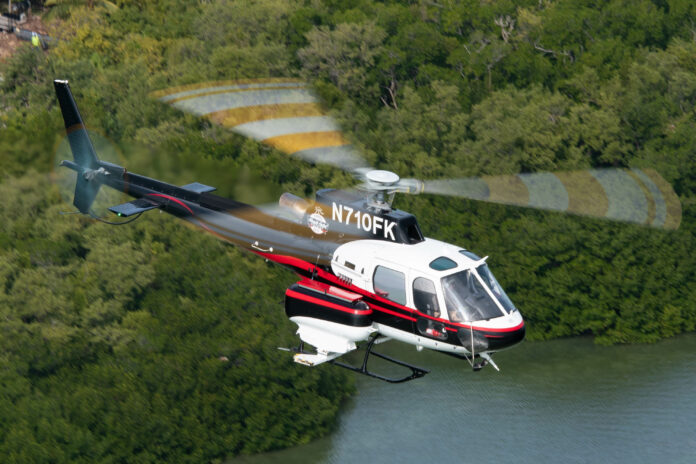The Florida Keys are a dream travel destination for many. Part of keeping the island paradise that stretches over one hundred miles at the top of the tourist destination list in Florida is holding one of the most annoying distractions of any vacation at a minimum – the mosquitos. That responsibility rests with the Florida Keys Mosquito Control District, located in Monroe County, Florida, hangared at Marathon Airport in Marathon, Florida.
History

The Florida Keys Mosquito Control District (FKMCD) operation started in earnest with several DC-3 and smaller aircraft dispersing adulticide around Monroe County, which spans hundreds of small islands in addition to the larger inhabited islands making up the Florida Keys. Many of the keys comprise marshland, a prime breeding ground for mosquitos.
Over the years, the district has evolved from delivering only adulticide to delivering approximately 80% larvicide, with the remaining 20% still delivered as adulticide directly over areas where granular larvicide is ineffective.

“We’re larviciding more now as we know where the mosquito larvae will be. As larvae, they are in water sources, so they are a lot easier to control. So we can treat them before they become flying adults. So they are not bothering any humans or spreading diseases. There are times where a west wind comes in from the Everglades and brings with it adults; that’s often when the 20% of adulticide is employed, and we’ll go out to specifically control them when needed,” said Chad Huff, Florida Mosquito Control District’s Public Information Officer.

In addition to Florida state land, the district is also responsible for several islands under federal control, which they treat with granular larvicide.
The switch to a majority of the application being larvicide was essentially an environmental one for the FKMCD as the BTI larvicide used is only fatal to mosquitos and one type of black fly species, yet fatal to all 46 mosquito varieties found in the Florida Keys area. The granular product, once dispersed, dissipates into the water, which is then ingested by the mosquito larva gut, reacting to enzymes within the larva, which crystalizes with fatal consequences.
Fleet
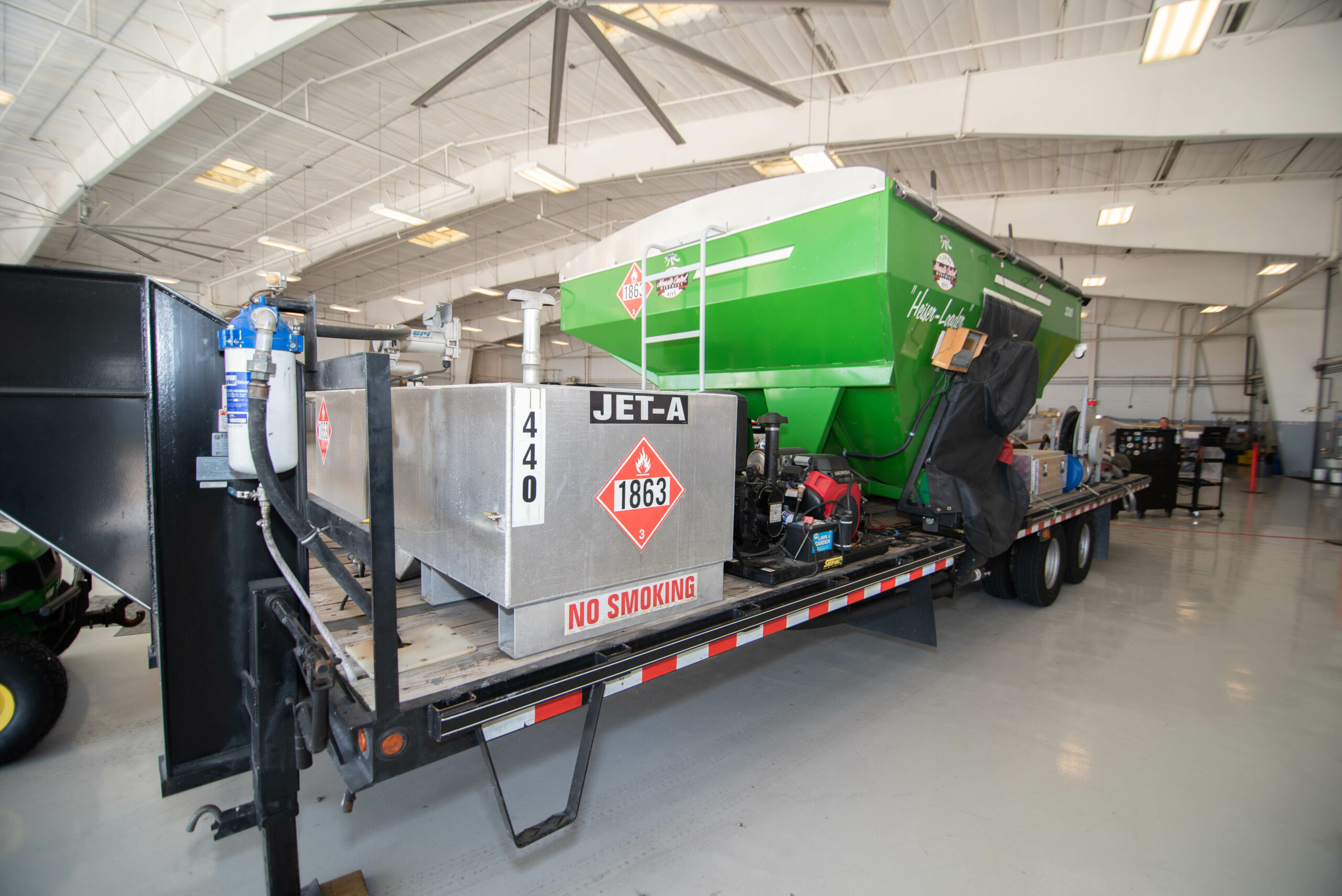
Once the agency DC-3 fleet reached the end of its useful life, FKMCD began transitioning to the aerial application of adulticide via the purchase of two Britten-Norman Rolls Royce 250 B17 powered Turboprop BN-2 Islanders, fitted with an under-wing 40-gallon micron air spray pods for Ultra Low Volume (ULV) adulticide delivery guided byan AGNAV system able to deliver their load at 130 knots during application.
While the Islanders are still with the district, the plan is to phase them out to focus on a 100% rotary fleet for future application needs. The district currently flies over 260 missions a year, based on 2023 statistics, flying approximately 1300 hours per year across the fleet.
After the introduction of the BN-2 Islanders, FKMCD also added rotary wing application to the mix, with the addition of two Bell Jetrangers in the late 1990s, progressing from those on to two Bell 206L4 Longrangers in 2002 and 2005 fitted with 40-gallon Isolair ULV dispersal tanks for liquid dispersal via booms and a belly tank and granular larvicide application via side-mounted hopper tanks.
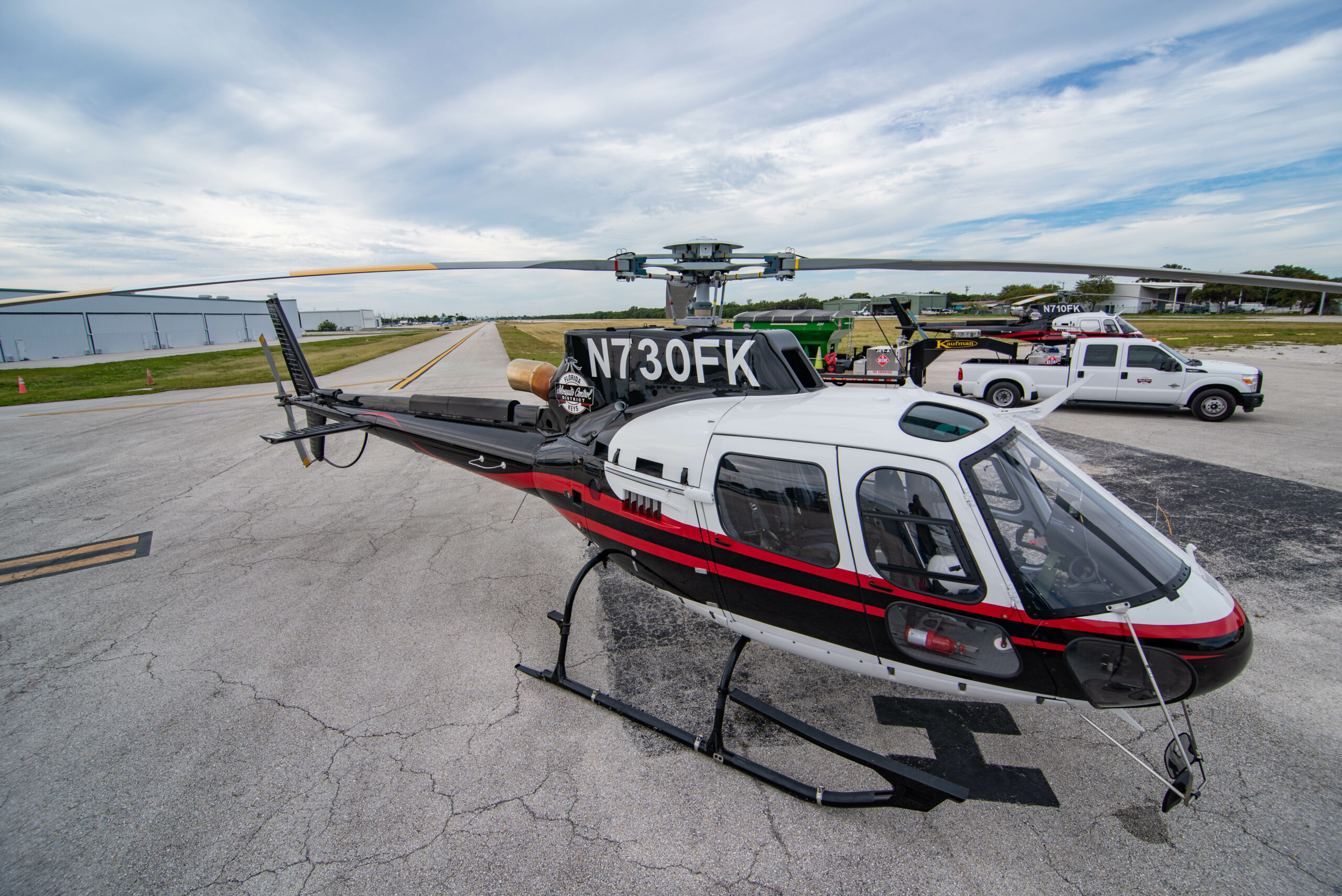
In 2020, the district took delivery of the first of three Airbus H125 “A-Star” helicopters over the next several years to streamline delivery and maintenance operations within FKMCD.
“The A-Stars are a three-mission ship. They’re doing the granular, liquid larvicide and keeping up with the same capabilities and efficiencies the airplanes had for ULV. The whole idea was to standardize the fleet for training and maintenance. It is much easier to deal with one aircraft than three different types. Maintenance-wise, we dealt with three different aircraft and three sets of parts. It was a logistical nightmare. In the future, everybody’s efficient on one aircraft as opposed to three different ones,” said Paul Pignataro, Chief Pilot at FKMCD.
“The H125 is a fantastic aircraft. It’s blown the Longangers out of the water with the amount of product it can carry. There are days when the pilot will stay in the aircraft, flying for six to eight hours during our busiest periods here. That’s brutal and in the older aircraft. In the A-star, it’s a lot less fatiguing, and going from a two to a three-rotor system, it’s a lot smoother of an aircraft,” he continued.
The H125s operated by FKMCD are equipped with an updated VEMD capable of 900 shaft horsepower, allowing a larger performance cushion with the additional power available that enables the application to be completed flying at an approximately 90-100 knot application speed.
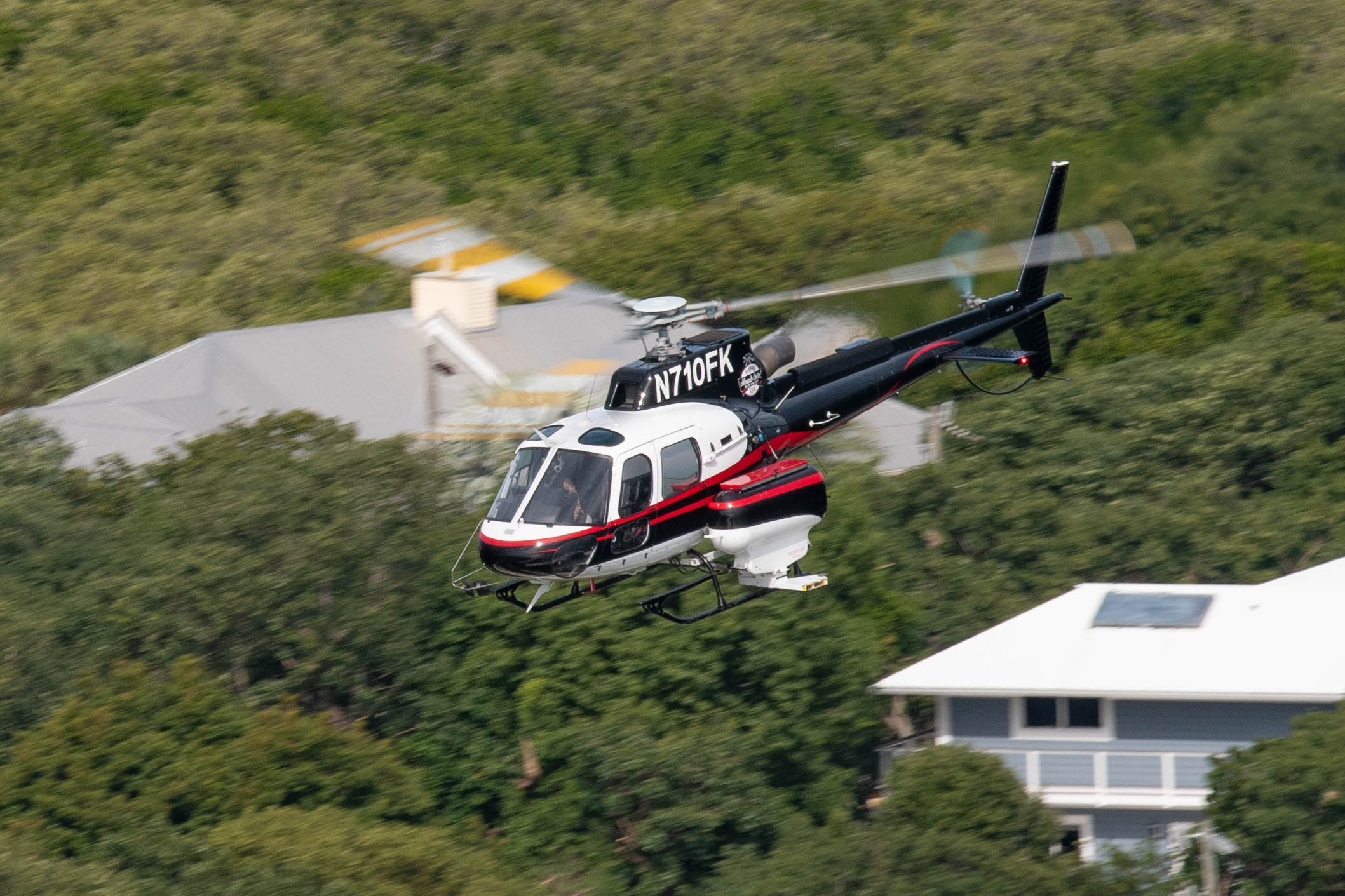
New Equipment, New Capacity
FKMCD employs multiple delivery methods for both adulticide and larvicide products that include a 40-gallon underbelly tank made by Isolair dispersing ULV liquid adulticide, a 275-gallon liquid larvicide tank in addition to an externally mounted dry granular delivery system capable of carrying 1200lbs of granular larvicide depending on the application need. This equates to a coverage rate of 150 acres per load, a substantial upgrade from the previous Longranger capacity of 800 pounds, which would limit their acre capability previously to 65 acres.
Speaking on the upgrade from a pilot perspective, Pignataro stated, “Everything’s electronic, from the dual FADEC system, which means we don’t have to worry about hot starts. The dual hydraulic system is excellent. Our previous Bell helicopters were a 2000 and 2003 model; the technology is almost redundant compared to the upgraded technology the new aircraft offers us as an organization.”
Staffing
While the district’s total staffing numbers are over 75, the aviation unit staffing consists of three full-time pilots and three part-time pilots who all receive the same training and certifications and are required to meet the same minimums.
Pilots hired for the district must have 1000 hours of helicopter time to be considered for FKMCD, while Pignataro explains that they try to look for pilots with 500 hours of turbine experience.

“We used to require an airplane rating, but since we’re transitioning, we’re not worried about that. It can be tough to get people down here because of the cost of living. Still, when it comes to government agencies, we are fortunate to have great health benefits, as everything’s paid for in addition to the option of the Florida retirement system, which adds to the benefit of working in the Keys,” said Pignataro.
Once a pilot is hired, all pilots are put through Airbus factory training at the Airbus facility in Grand Prairie, Texas, along with annual recurrent training and ditching training conducted in conjunction with the Monroe County “Trauma Star” team.
The Science Behind the Application
While it sounds low-tech compared to the application method, the district decides when an application is needed via a rudimentary process. One of a team of more than 35 ground inspectors will attend to dozens of specific locations used by the district to gather intelligence on mosquito breeding populations to develop a Proposed Treatment Area (PTA) via what is commonly called a “land test,” where the inspector will count the number of mosquitos within a given time that land on the inspector’s arm to gather the intelligence needed to categorize the need for PTA’s in the area. PTAs are developed urgently via computer analysis of multiple sets of data fed into the system to define the urgency of treatment.
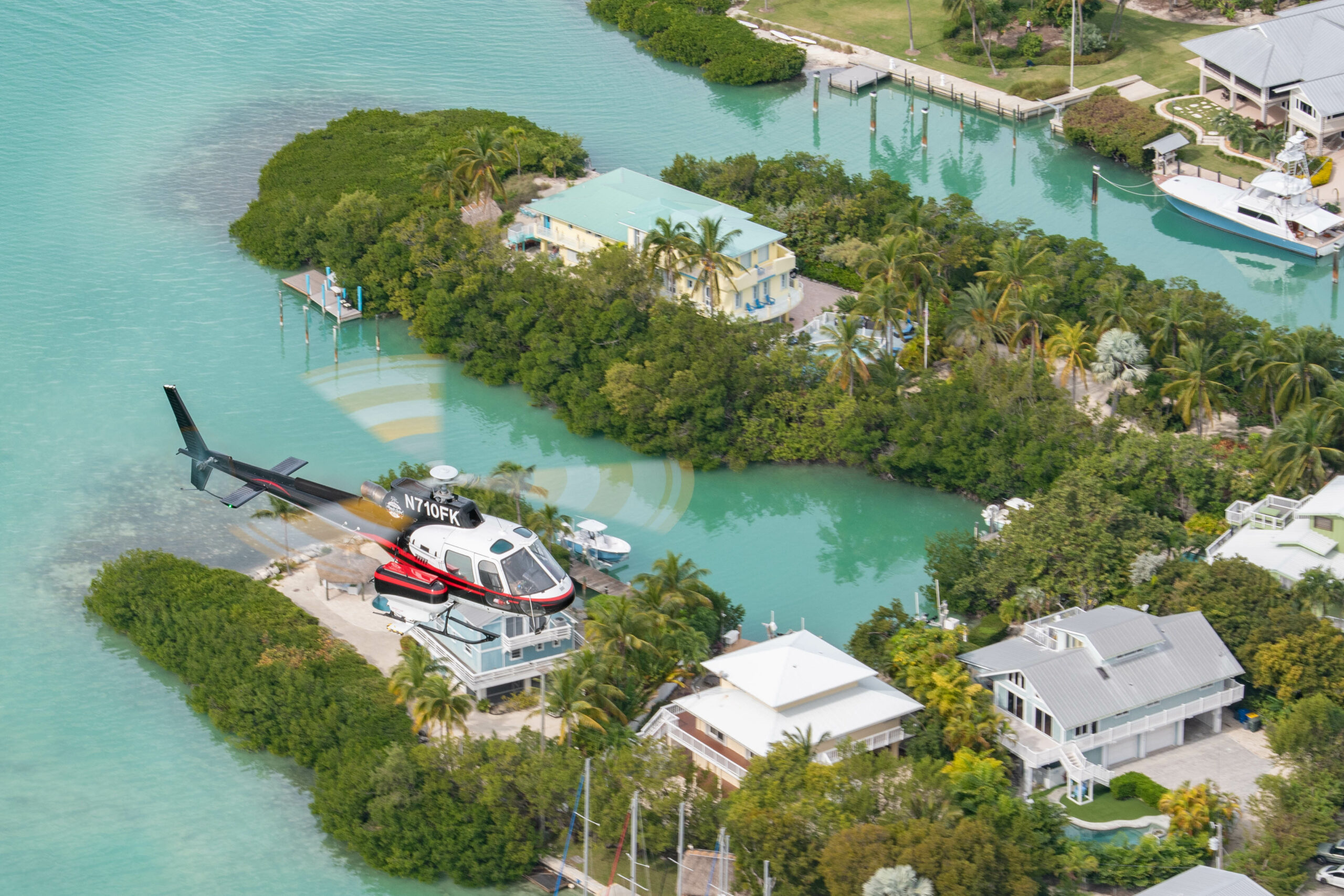
Unique Application Area
The Florida Keys are an area unlike others in that pilots are flying over great distances to perform aerial application tasking, which can sometimes lead pilots and aircraft to be over 100 miles from their home base of Marathon, which in turn means that the district has to deploy field assets so aircraft can land at designated off-site locations decided by the district to keep the aircraft in the field for applications in the wider-reaching areas of the Florida Keys.
To accomplish this, the aviation division of the district employs dozens of field technicians that will forward deploy to application locations after a PTA has been dispatched with a truck and custom-designed trailer with an autoloader hopper carrying larvicide onboard a custom-built trailer capable of carrying a load of larvicide, enabling crews to stay in the field applying product for several days if needed. In addition to the on-site larvicide, the trailers are equipped with onboard fuel storage for several hundred gallons of JET-A fuel, enabling the aircraft to refuel in the field without a return trip to Marathon or another airport within the Florida Keys.
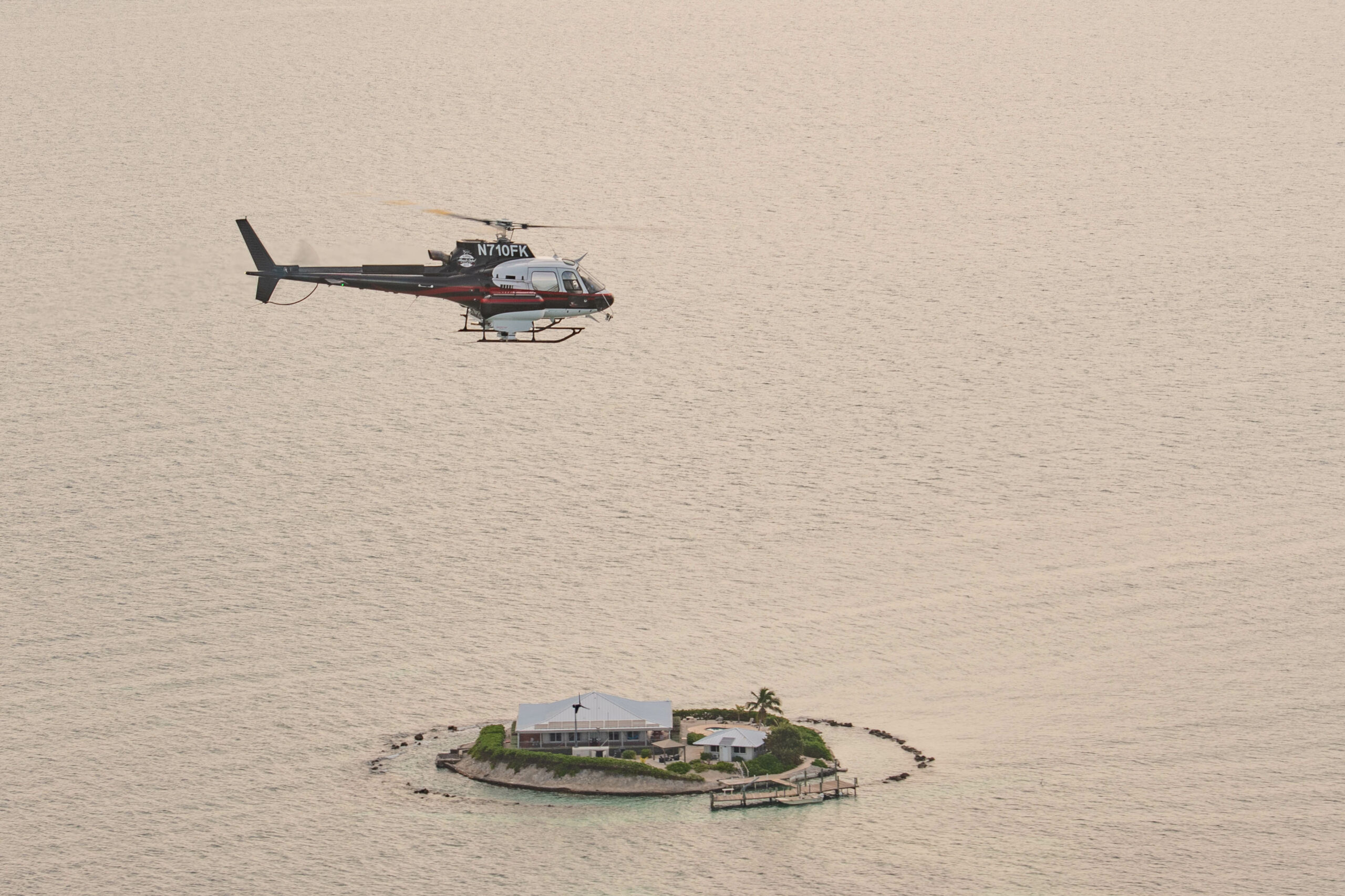
“On a busy day, we can have one truck down south with a couple of helicopters applying the product, one truck up north with a helicopter, and then one truck here with a helicopter. There’s been days where we’ve had all four helicopters out at once. Our busy season here is May through October. After October, the weather calms down, and the rainy season starts, so along with the temperature change, the mosquitoes aren’t growing as fast as they typically are. So it gets slower for us; that is when we concentrate on meetings training requirements and maintenance tasks until the season picks back up for us,” said Pignataro.
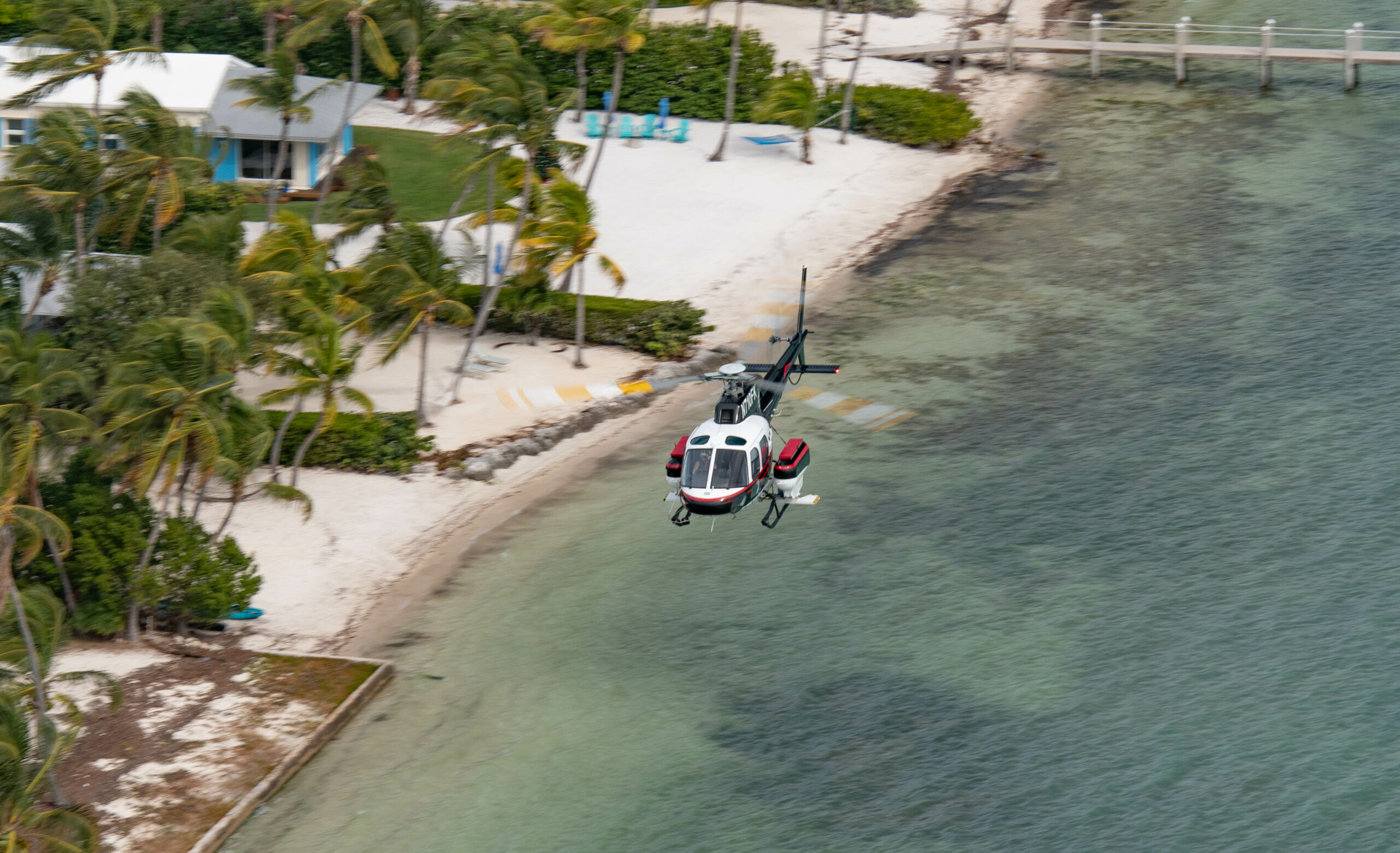
Looking to the future
Florida Keys Mosquito Control District’s Executive Director, Andrea Leal, who has been with the district since the early 2000s, stated that while fixed-wing aircraft was a significant step in pushing the district into the next generation of application, the district believes that helicopters will fulfill the role for aerial application in the Florida Keys in the future.
“In the last ten years, we’ve targeted precision larviciding. When I first started, we started using helicopters. Once we realized this could have a significant effect and impact on mosquitoes, this was the direction that we wanted to go. We had to figure out what machine we could use that could do Everything we needed to do, whether it was adulticiding, liquid larviciding, or granular larviciding; the aircraft had enough capacity to do all three. And because of that capacity with the newer aircraft, we could completely replace the airplanes that could only do one of those tasks. Once we did a cost-benefit analysis, we looked at what would work best for us here at the district, and the A-stars seemed to fit the bill for us; we bought our first A-Star in 2020, and it was a relatively quick progression to three.” Leal stated.
“Where we would like to end up is to have four aircraft. That way, we don’t have to worry about pilots being able to go from airplane to rotorcraft. So we are thinking about overall efficiency.

One of our biggest concerns is mosquito-borne diseases; we see Dengue fever. Chikungunya was up in South Florida, and Zika was in South Florida. So, what we do here makes a significant impact on public health. Responding immediately when we see mosquitoes is of the utmost importance.
Having that aviation fleet allows us to respond immediately. We’ve got to be out as soon as we see those mosquitoes to prevent anything from happening here. And so that’s the most significant advantage of having our fleet. As we continue to progress our program, the sale of our airplanes, plus one of the Longrangers, I think we’ll be able to hopefully finalize the final fleet replacement by 2025 or 2026 at the latest, bringing the A-Star fleet to a total of four aircraft.” she continued.

As some agencies still struggle with which aircraft suits their requirements the best, the Florida Keys Mosquito Control District has set its sights on a modern aircraft fleet and innovative field delivery methods that benefit the residents and visitors to the area alike and seem to have established themselves in the right direction to be future-proofed for a long time to come in the world of aerial application.


